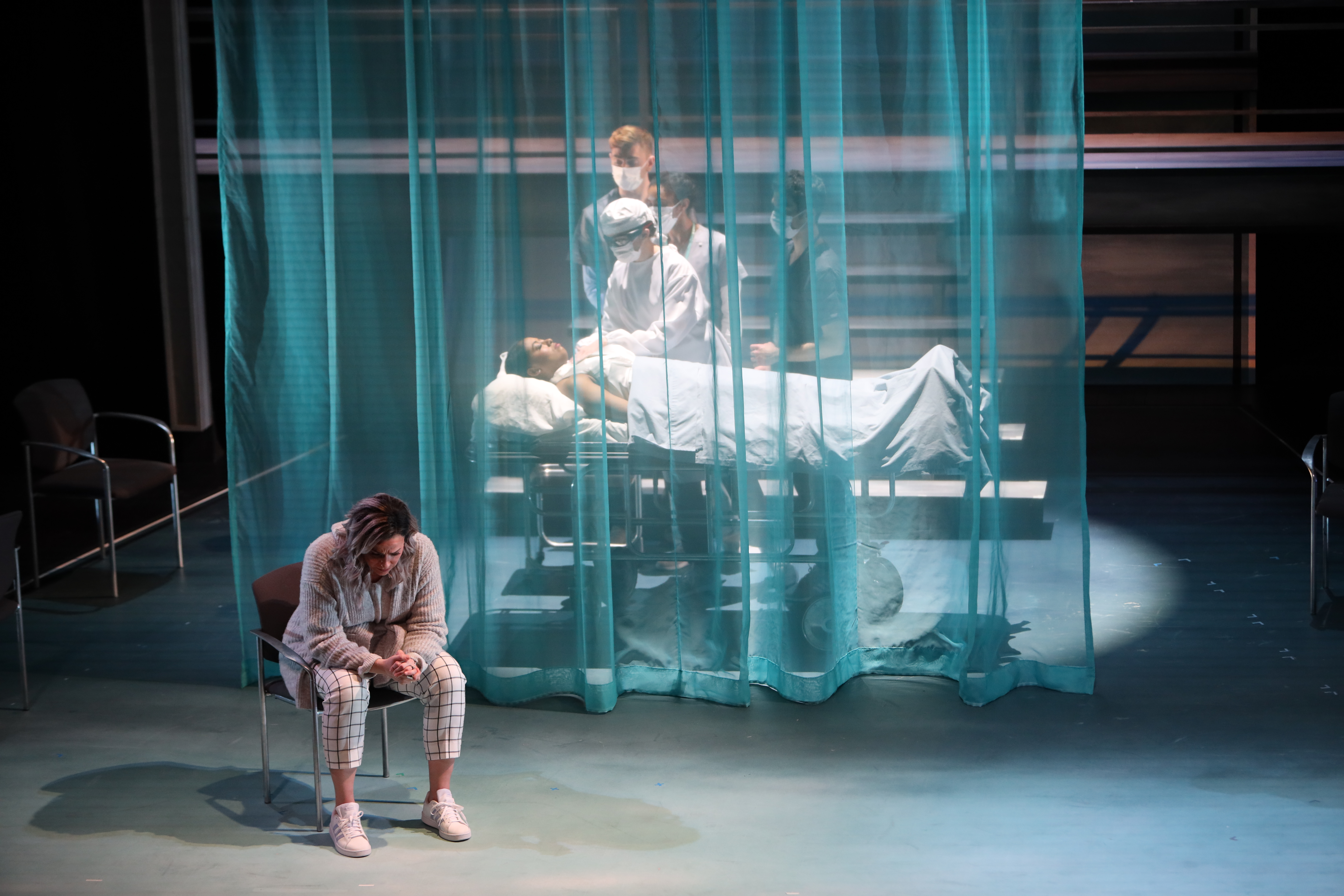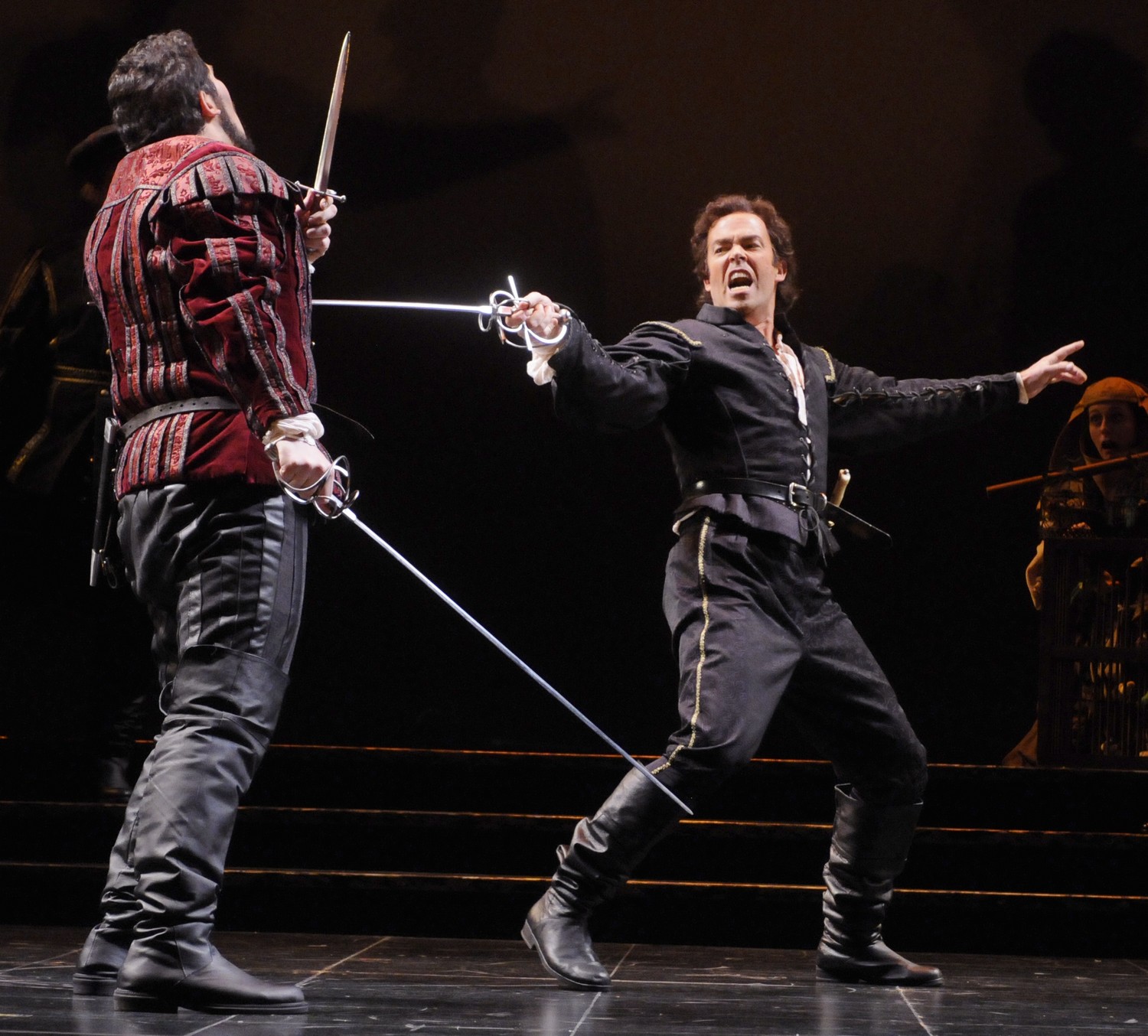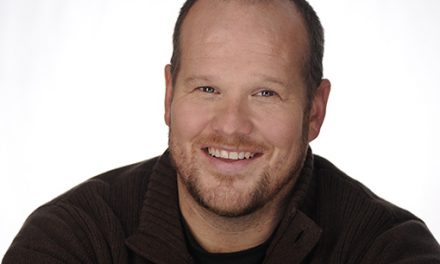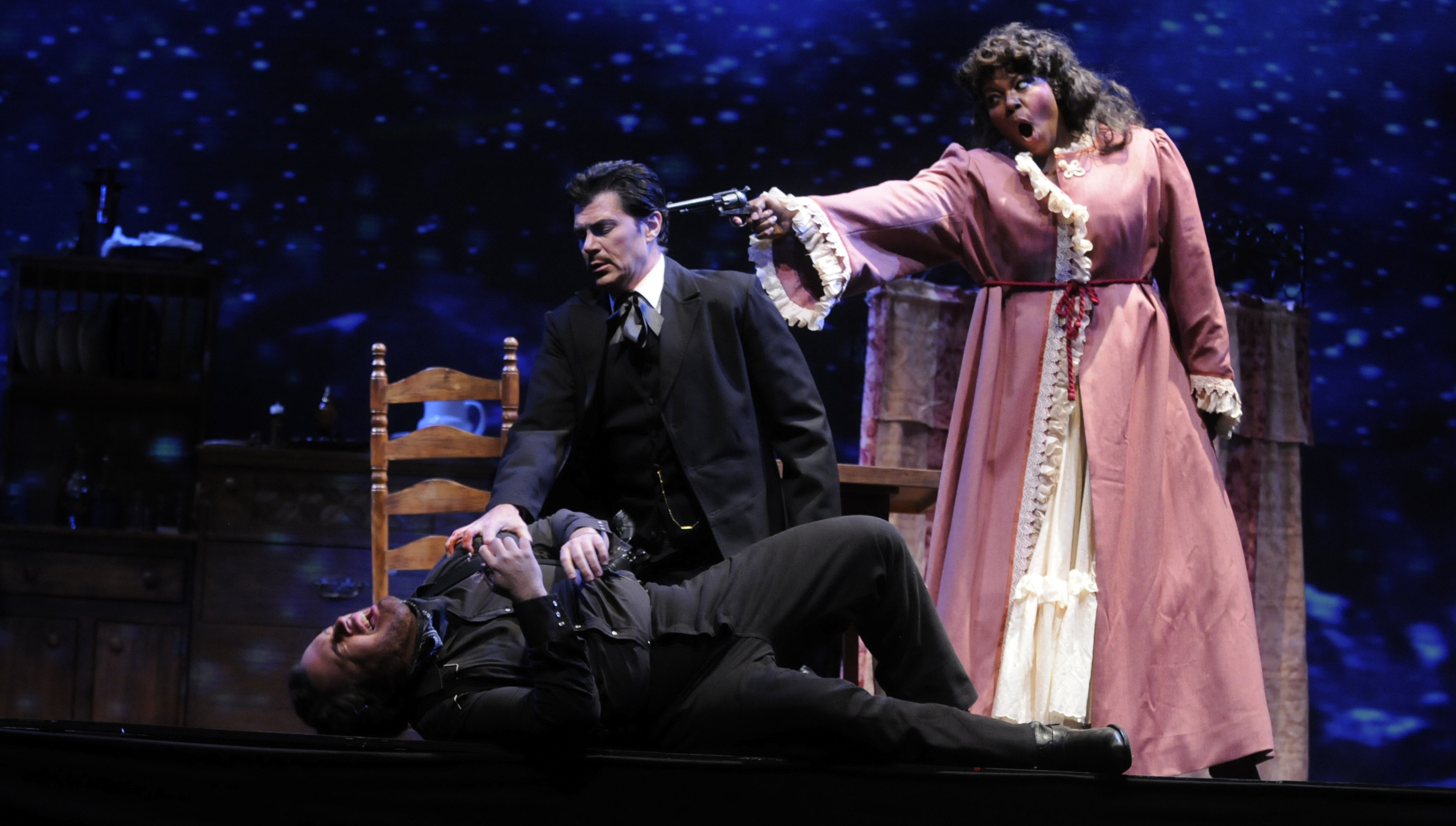Catherine Martin & Flora Hawk in Orfeo ed Euridice. Photo: KY Opera
Orfeo ed Euridice
Music by Christoph Willibald Gluck
Libretto by Ranieri de’Calzabigi
Directed by Kelly Kitchens
Conducted by Judith Yan
Choreographed by Robert Curran
A review by Annette Skaggs
Entire contents are copyright © 2022 by Annette Skaggs. All rights reserved.
Many of us have asked the same questions when faced with the loss of someone we held dear: “if only I had known”, “is there anything that I could have done to prevent this?” and followed by the more pervasive thought, and “if only I had more time with them.”
Orfeo (or Orpheus, depending on your interpretation) is faced with the loss of their treasured spouse, Euridice. As Euridice slips the mortal coil, Orfeo is willing to move heaven and hell to bring their beloved back. While in a state of despair and fearing the unknown, Orfeo falls into a dream-like reality where the god Amore makes a deal to allow for Orfeo to reunite with Euridice, but only if Orfeo does not look upon Euridice or share why they cannot be gazed upon. Should these bargains not be met, Orfeo will lose Euridice forever.
Director Kelly Kitchens takes a very modern approach to a classic story that makes it more relatable to our own experience. Within the hospital-room setting are characters, like Orfeo (Catherine Martin), all anticipating with worry and hope for news of their respective loved ones. As Orfeo descends into memories of their life with Euridice (Flora Hawk), the people in the waiting room then morph into vignettes of those memories: picnics in the park, going on dates, getting married.
As the deal is struck with Amore (Catherine Goode), Orfeo descends into Hell and is greeted by the demons and spirits that live within that realm and guard the next step that keeps the couple apart. But these are no ordinary spirits. In collaboration with the Louisville Ballet and brilliant choreography from Robert Curran, a talented and almost ethereal corps of dancers help the narrative from the waiting room to the aforementioned demons. As the spirits writhe and crawl among Orfeo, they are tempered by the tremendous love that is shared between the lovers and with Amore’s permission, allow Orfeo to pass on to the Elysium Field.
Upon reaching the next level, the music is brighter, as is the lighting, we find ourselves back in the hospital where there is cheerfulness and hope. Her body completely covered in a veil, Euridice descends down the stairs, guided by Amore. As Amore lifts the veil, Euridice is resplendent in all white as they begin to touch and love on their darling Orfeo. As Orfeo is adoring the touch of Euridice once again, the couple begins to argue as to why Orfeo will not gaze upon Euridice’s face. The quibble between the lovers was just an absolute joy to watch as the performers truly got into character and their duet Vieni, appaga il tuo consorte was rich. Euridice grows more confused and in the aria Che fiero momento shares that death is preferable to losing the love of Orfeo.
The torture becomes too much to bear for Orfeo and as the couple lock eyes, Euridice dies once again. In anguish and sorrow, Orfeo cries out with a gorgeously performed Che farò senza Euridice?
Because Orfeo cannot fathom living on without Euridice they choose to end their own life and descend into the fiery pit of Hell so that at least in death the couple can be together, but upon hearing Orfeo’s mournful decision, Amore stops lovesick Orfeo and brings Euridice back to life.
Ms. Kitchens’ interpretation of this scene was heartbreaking and finger-biting and I feel most, if not all, audience members could appreciate and recognize such moments in their own lives. Perhaps the journey to the hospital and the cries and devotion of the lovers offered some peace and solace to those of us who watched a mesmerizing performance on stage and identified with their emotions, laid bare for the world to witness.
While the character of Amore has a scant amount of time on stage, Ms. Goode’s interpretation was charming and her costumes very chic, but I feel that her vocal delivery could use a bit more oomph. However, her interaction with the demons was delicious.
Flora Hawk’s Euridice was sumptuous and buttery, save for a small hiccup during Che fiero momento, and her interactions with Catherine Martin’s Orfeo were of storybook quality.
And, speaking of storybooks, Catherine Martin took the role of Orfeo and just absolutely ran with it. Yes, it is true that Orfeo is commonly performed by a male, but Ms. Martin’s rich and balanced mezzo was made for this role and her acting was just as enjoyable as her sound.
Speaking of sound, how fortunate were we to be able to attend a performance of a Baroque opera with instruments that were used during the Baroque era. Local musician John Austin Clark’s Bourbon Baroque focuses on using authentic instruments of the time. For instance, when is the last time that you’ve seen a sackbut mentioned in a Louisville Orchestra performance? It is just one of those instruments that while common in the 18th century, is not so much in the 21st, yet still has a place in music making. Under the baton of Judith Yan, the music just came to life.
While instruments of the Baroque era are still used today, their designs and sounds differ a bit from what we are familiar with. The differences are subtle but noticeable and great care needs to be taken throughout the performance to maintain clarity, tone, and key structures. And speaking of great care, while many of the instruments that were used for the opera are replicas, during her curtain speech Executive Director Barbara Lynne Jamison shared that one of the violins used that evening dated back to 1703, the same time that Gluck was alive. For a music nerd such as myself, that is just one of the neatest things.
Staging was simple and effective and the use of props kept to a minimum, but there was an issue with lighting. At one point several rings of light came down from the ceiling to illuminate the stage, but also illuminated the audience to the point where it may have been an assault on the eyes because of their brightness. While where I was seated the lights didn’t bother me too much, but I heard other patrons make mention of it as I was leaving the performance.
The Kentucky Opera Chorus was placed in just the right spot to serve as the Greek chorus to propel the story along. While I would have liked a bit more scare while they “sang in Hades”, I enjoyed hearing their songs once again.
I, for one, was delighted to see this opera on the books for production as it had been way too long since last I had seen a performance. Truly this interpretation did not disappoint as it skirted the norms of opera in the use of women in the principal roles, something that I hope will continue to happen. The stage is meant for these inventions, Keep pushing!
Bravi Tutti and Welcome Back, Kentucky Opera!!!
Orfeo ed Euridice
February 11-13, 2022Kentucky Opera
The Brown Theatre
315 West Broadway
Louisville, KY 40202
kyopera.org
Annette Skaggs is a long-time Arts Advocate here in Louisville. She is a freelance professional opera singer who has performed throughout Europe and in St. Louis, Cincinnati, Boulder, Little Rock, Peoria, Chicago, New York and of course Louisville. Aside from her singing career, she has been a production assistant for Kentucky Opera, New York City Opera, and Northwestern University. Her knowledge and expertise have developed over the course of 25+ years’ experience in the classical arts.





